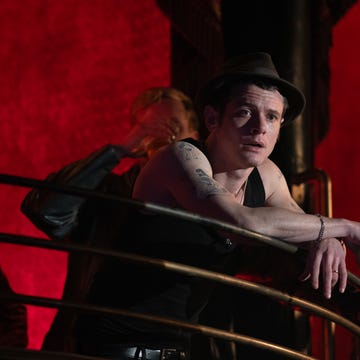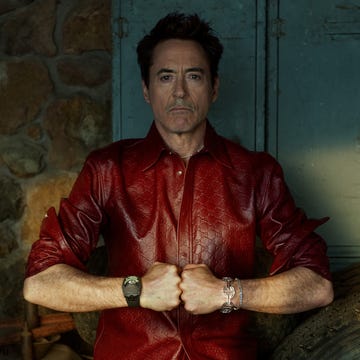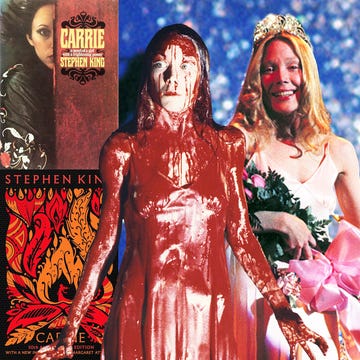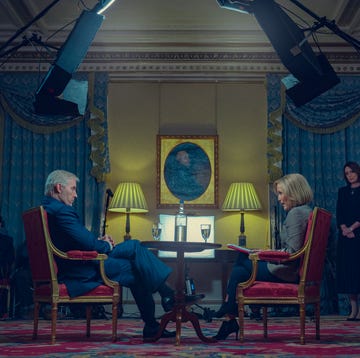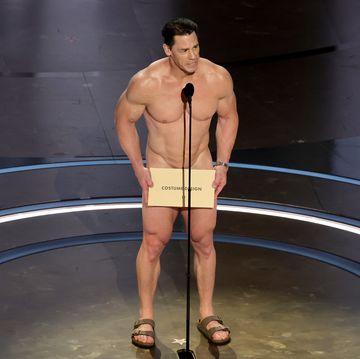Better Call Saul may be a spin-off of Breaking Bad, but after just two episodes it's already clear you don't need to know the original to enjoy the prequel.
That said, familiarity with Breaking Bad makes Better Call Saul better by turning it into a treasure hunt for satisfying callbacks. Some of the Saulbacks, as we're calling them, have been obvious, others subtle, and many debatable.
For fans of Breaking Bad, they're winks that reward years of commitment. Vince Gilligan has said as much, telling the Hollywood Reporter, "We love rewarding the audience that pays strict, close attention. We love little Easter eggs."
Each week, we're planning to catalogue those Easter eggs, at least all those that we notice. First up, the first two installments, "Uno" and "Mijo."
Season 1, Episode 1: "Uno"
• The Cinnabon in Omaha
In "Granite State," the table-setting penultimate episode of Breaking Bad, a dejected Saul Goodman speculates about his life after he disappears from New Mexico. "If I'm lucky in a month from now, best-case scenario, I'm managing a Cinnabon in Omaha," he says. Consider Saul lucky, even if his life in Omaha appears bleak and meaningless. Also worth mentioning is the way director Vince Gilligan shows those gooey Cinnabons transforming from disparate parts into a divine, cohesive creation. The close-ups, the detail, the process—it all mirrors scenes showing Walt and Jesse cooking their renowned blue meth, perhaps the only substance more addictive than Cinnabon's 1,000-calorie dough bombs.
• Saul's hiding place and the video in it
Just like Walter before him, Saul has taken to hiding his most valuable goods, in this case, remnants of his past life, in a hole under his floorboards. In a moment of weakness during our brief glimpse of Saul in the present day (living as a mustachioed lunk named Gene), he reaches into that hiding place and pulls out a VHS tape with recordings of his cheesy commercials.
• Zen Nail Spa
In season three of Breaking Bad, Saul enjoys a manicure at this seemingly unremarkable nail salon as he tries to convince Jesse to use it as a money-laundering operation. In season four, he tries to convince Walt and Skyler to buy it to help them launder their money. Now we know why he was so convinced of its utility: when he was still known as Jimmy McGill, Saul ran his two-bit law office out of a broom closet in the back of the building.
• Tuco and Mike show their faces
Maybe the appearances of two characters central to Breaking Bad aren't so much callbacks as indications that Albuquerque is a small town. Given the importance of these two characters, though, we're including them here. When we meet Mike, he's a parking-lot attendant at the local courthouse hassling Saul (then Jimmy) about parking fees. Meanwhile, Tuco is seen only briefly sticking his head out of his grandmother's front door after pulling a gun on Saul (aka Jimmy—let's hope he changes his name on the show soon so this is easier).
• Saul's Cadillac DeVille
Throughout Breaking Bad, Saul drives a white Cadillac DeVille, similar to the car we briefly glimpse before setting eyes on the piss-yellow Suzuki Esteem Saul drives before becoming the sleaziest lawyer in ABQ.
• Windshields break
It was a running joke on Breaking Bad—the windshield on Walt's Pontiac Aztek broke easier than a skateboarder's legs—and if the premiere of Better Call Saul was any indication, the gag will live on. Two windshields broke in this episode, one on Saul's clunker and one on Tuco's abuelita's wagon.
• Juan Tabo Avenue
Gale Boetticher lived on Juan Tabo Avenue and the insurance scamming twins followed Tuco's abuelita on Juan Tabo Avenue. Yes, Juan Tabo Avenue is a major thoroughfare in Albuquerque, but when Gilligan needed a street to reference in the Better Call Saul premiere, he surely chose Juan Tabo Avenue as little treat for those watching and listening closely.
Season 1, Episode 2: "Mijo"
• Another cooking montage
At a certain point, stylistic choices like the method in which Tuco is shown cooking will stop reminding us of Breaking Bad and exist as part of a continuum. That point hasn't yet arrived, so Tuco's pepper chopping and the way it's shown qualifies as a Saulback.
• Tuco respects his elders
It's impossible to see the way Tuco treats his abuelita—you think he would scrub a rug for anyone else?—and not think of the respect he had for his diabolical Tio, who, like Tuco's abuelita, really enjoyed TV. Elderly family members are this psychotic drug dealer's only soft spot. Call one of them a "biznatch" and he'll bring fury down on your face with a cane.
• No Doze gets mouthy
As Tuco debates his options (murder? maiming? torture?) for dealing with Saul and the idiot twins in the vast emptiness of the desert, his henchman No Doze speaks without being spoken to. That's a mistake. Tuco quickly admonishes No Doze, a reminder of the how the sidekick would eventually meet his demise for popping off to Tuco in a junkyard.
***
MORE FILM AND TV:
Why I Won't Be Watching Better Call Saul
The 10 Greatest TV Dramas Of The Century
TV Boxsets: How Long Before You Can Go Again?
***






